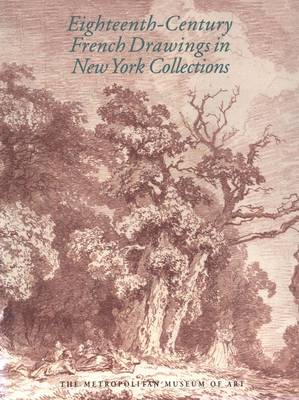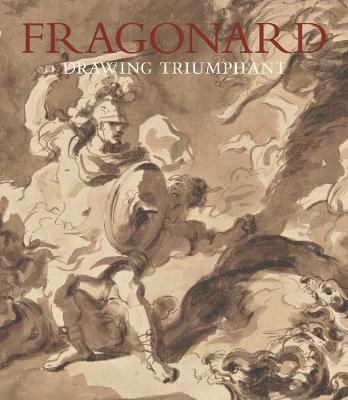Metropolitan Museum of Art
2 total works
Eighteenth-Century French Drawings in New York Collections
by Perrin Stein and Mary Tavener Holmes
Published 1 January 1999
"The first dream, the first germ, the first conception" was how in 1894 the renowned connoisseur Philippe de Chennevieres, whose celebrated collection of drawings numbered in the thousands, chose to describe the essence and appeal of this medium. For this nineteenth-century French aesthete, only a small number of refined individuals had a true appreciation of these highly personal jottings and studies. Since his time, however, the ranks of connoisseurs of eighteenth-century French drawings have grown steadily, not only in France but in the United States as well.
The Enlightenment in France was marked by progress and innovation in virtually every area of intellectual and artistic endeavor. With the influential writings of Voltaire and Rousseau and the political challenges that led to the overthrow of the Bourbon monarchy and the founding of the French Republic, the eighteenth century is often seen as laying the foundations of the modern era. The far-reaching intellectual and cultural aspirations of the eighteenth century found one form of expression in the draftsmanship of the age. In a period that valued inspiration over rote, drawing-perhaps more than any other artistic medium-embodied the creative impulse. Painters, sculptors, and printmakers were attracted to the medium of drawing, not just for its practical utility but as a vehicle for the expression of individual genius.
Arranged chronologically and thematically, Eighteenth-Century French Drawings in New York Collections traces the expansion of the Rococo style through the accomplishments of its most brilliant practitioners and through its gradual displacement by the more spartan Neoclassical idiom, which accelerated during the political upheaval of the Revolution and its aftermath. An intimate window into the creative process, the medium of drawing in the eighteenth century gained a devoted following of connoisseurs who began to collect, document, and treasure the graphic output of their contemporaries, a pursuit carried on through the centuries and continued with enthusiasm by public institutions and private collectors in New York today. This volume, and the exhibition for which it serves as the catalogue, attempt to strike a balance between a broad representation of the acknowledged masters of the period-Watteau, Boucher, Natoire, Fragonard, Robert, Greuze-and talented but lesser-known artists, including Doyen, Drouais, and Isabey. The one hundred sheets included, many of them previously unpublished, present a broad range of subjects-from genre, still life, and portraiture to studies for history painting-and are drawn from the holdings of The Metropolitan Museum of Art, Pierpont Morgan Library, Cooper-Hewitt Museum (Smithsonian Institution), The Frick Collection, and twenty-seven private collections. [This book was originally published in 1999 and has gone out of print. This edition is a print-on-demand version of the original book.]
The Enlightenment in France was marked by progress and innovation in virtually every area of intellectual and artistic endeavor. With the influential writings of Voltaire and Rousseau and the political challenges that led to the overthrow of the Bourbon monarchy and the founding of the French Republic, the eighteenth century is often seen as laying the foundations of the modern era. The far-reaching intellectual and cultural aspirations of the eighteenth century found one form of expression in the draftsmanship of the age. In a period that valued inspiration over rote, drawing-perhaps more than any other artistic medium-embodied the creative impulse. Painters, sculptors, and printmakers were attracted to the medium of drawing, not just for its practical utility but as a vehicle for the expression of individual genius.
Arranged chronologically and thematically, Eighteenth-Century French Drawings in New York Collections traces the expansion of the Rococo style through the accomplishments of its most brilliant practitioners and through its gradual displacement by the more spartan Neoclassical idiom, which accelerated during the political upheaval of the Revolution and its aftermath. An intimate window into the creative process, the medium of drawing in the eighteenth century gained a devoted following of connoisseurs who began to collect, document, and treasure the graphic output of their contemporaries, a pursuit carried on through the centuries and continued with enthusiasm by public institutions and private collectors in New York today. This volume, and the exhibition for which it serves as the catalogue, attempt to strike a balance between a broad representation of the acknowledged masters of the period-Watteau, Boucher, Natoire, Fragonard, Robert, Greuze-and talented but lesser-known artists, including Doyen, Drouais, and Isabey. The one hundred sheets included, many of them previously unpublished, present a broad range of subjects-from genre, still life, and portraiture to studies for history painting-and are drawn from the holdings of The Metropolitan Museum of Art, Pierpont Morgan Library, Cooper-Hewitt Museum (Smithsonian Institution), The Frick Collection, and twenty-seven private collections. [This book was originally published in 1999 and has gone out of print. This edition is a print-on-demand version of the original book.]
Fragonard
by Perrin Stein, Marie-Anne Dupuy-Vachey, Eunice Williams, and Kelsey Brosnan
Published 18 October 2016
An exquisitely illustrated volume that emphasizes the importance of drawing in Fragonard's creative process
One of the most forward-looking artists in 18th-century France, Jean-Honoré Fragonard (1732–1806) is considered the preeminent draftsman of his time. This fresh assessment of the artist focuses on the role of drawing in his creative process and showcases Fragonard’s mastery and experimentation with drawing in a range of media, from vivid red chalk to luminous brown wash, as well as etching, watercolor, and gouache. Unlike many old master painters, Fragonard explored the potential of drawings as works of art in their own right, ones that permitted him to work with great freedom and allowed his genius to shine. The drawings featured here come from public and private collections in New York, balancing a mix of well-loved masterpieces, new discoveries, and works that have long been out of the public eye.
Published by The Metropolitan Museum of Art / Distributed by Yale University Press
One of the most forward-looking artists in 18th-century France, Jean-Honoré Fragonard (1732–1806) is considered the preeminent draftsman of his time. This fresh assessment of the artist focuses on the role of drawing in his creative process and showcases Fragonard’s mastery and experimentation with drawing in a range of media, from vivid red chalk to luminous brown wash, as well as etching, watercolor, and gouache. Unlike many old master painters, Fragonard explored the potential of drawings as works of art in their own right, ones that permitted him to work with great freedom and allowed his genius to shine. The drawings featured here come from public and private collections in New York, balancing a mix of well-loved masterpieces, new discoveries, and works that have long been out of the public eye.
Published by The Metropolitan Museum of Art / Distributed by Yale University Press
Exhibition Schedule:
The Metropolitan Museum of Art
(10/06/16–01/08/17)

